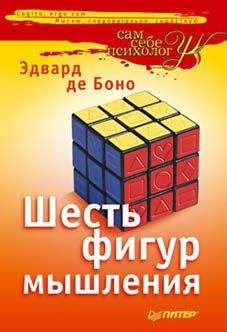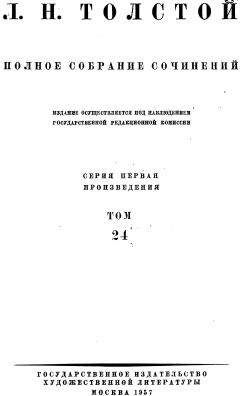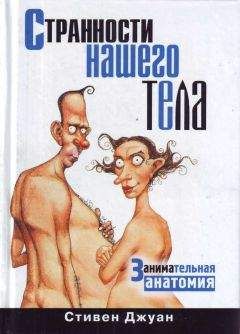150
Dr David Maurice is from Columbia University.
D. Maurice, ‘The Von Sallmann lecture 1996: An ophthalmological explanation of REM sleep’, Experimental Eye Research, 1996, vol. 66, no. 2, pp. 139–145.
Drs F. Hoff mann and G. Curio are from the Free University of Berlin.
F. Hoff mann and G. Curio, ‘REM sleep and recurrent corneal erosion – hypothesis’, Klinische Monatsblatterfur Augenheilkunde, 2003, vol. 220, nos. 1–2, pp. 51–53.
‘Rolling eyes gather more oxygen’, New Scientist, 28 February 1998, p. 23.
A. Mijolla, international Dictionary of Psychoanalysis, eNotes, Seattle, 26 May 2006.
G. Cook, ‘How do we take advantage of infl ection points?’, Cook & Company Commentary, Winter 2003, p. 2.
S. Juan, ‘What’s this “scotomisation” in The Da Vinci Code?’, The Register, 9 June 2006.
S. Juan, ‘Why seeing is not always believing’, National Post, 28 September 2006, pp. 1–2.
S. Juan, ‘Great moments in human research’, The Register, 27 January 2007.
S. Juan, ‘Great moments in human research’, The Register, 3 February 2007.
University of California, San Diego Medical Centre, Types of Nasal Dysfunction, University of California, San Diego, 12 August 2006.
S. Juan, Are there people with no sense of smell?’, The Register, 16 September 2006.
S. Juan, ‘Is there an evolutionary advantage in snoring?’, The Register, 14 July 2006.
S. Juan, ‘What evolutionary advantage is there in making a sound while snoring?’, National Post, 30 October 2006, pp. 1—2
Drs J. A. Gottfried and R.J. Dolan are from the Functional Imaging Laboratory of the Wellcome Department of Imaging Neuroscience in London.
J. Gottfried and R. Dolan, ‘The nose smells what the eye sees: Crossmodal visual facilitation of human olfactory perception’, Neuron, 2003, vol. 39, no. 2, pp. 375–386.
Drs R.A. Osterbauer, P. Matthews, M. Jenkinson, C. Beckmann, P. Hansen and G. Calvert, are from the Oxford Centre for Functional Magnetic Resonance Imaging of the Brain at Oxford University.
R. Osterbauer et al., ‘Colour of scents: Chromatic stimuli modulate odour responses in the human brain’, Journal of Neurophysiology, 2005, vol. 93, no. 6, pp. 3434–3441.
Drs S. Lombion-Pouthier, P. Vandel, S. Nezelof, E. Haffen and J. Millot are from the Laboratoire de Neurosciences at the Universite de Franche-Comte in Cedex, France.
S. Lombion-Pouthier et al., ‘Odor perception in patients with mood disorders’, Journal of Aff ective Disorders, 2006, vol. 90, nos. 2–3, pp. 187–191.
Drs K. Sugiyama, Y. Hasegawa, N. Sugiyama, M. Suzuki, N. Watanabe and S. Murakami are from the Nagoya City University Medical School.
K. Sugiyama et al., Smoking-induced olfactory dysfunction in chronic sinusitis and assessment of brief University of Pennsylvania Smell Identifi cation Test and T&T methods’, American Journal of Rhinology, 2006, vol. 20, no. 5, pp. 439–444.
S.Juan, ‘Who knows what there is to know about the nose?’, The Register, 17 November 2006.
Dr Betty Repacholi is from the Department of Psychology at the University of Washington in Seattle.
T. Case, B. Repacholi and R. Stevenson, ‘My baby doesn’t smell as bad as yours: The plasticity of disgust’, Evolution and Human Behaviour, 2006, vol. 27, no. 5, pp. 357–365.
Drs V. Curtis, R. Aunger and T. Rabie are from the London School of Hygiene and Tropical Medicine.
V. Curtis et al., ‘Evidence that disgust evolved to protect from risk of disease’, Proceedings/Biological Sciences. The Royal Society, 2004, vol. 271, suppl. 4, pp. S131—133.
V. Iannelli, Do Babies Have Sinuses? Your Guide to Pediatrics, About Inc., New York, 4 July 2006.
S. Juan, ‘Why do babies always seem to have a runny nose?’, The Register, 28 July 2006.
S.Juan, ‘Why do babies often have a runny nose?’, National Post, 13 November 2006, p. 1.
S.Juan, ‘Great moments in human research’, The Register, 27 January 2007.
S. Juan, ‘Great moments in human research’, The Register, 3 February 2007.
D. Feldman, What are Hyenas Laughing at, Anyway? HarperCollins, New York, 1996, p. 61.
Dr Noam Sobel is now a professor of psychology at the Helen Wills Neuroscience Institute of the University of California at Berkeley.
M. Barraud, ‘Two sides of it’, New Scientist, 6 November 1999, p. 6.
L. Watson, Jacobson’s Organ and the Remarkable Nature of Smell, WW. Norton, New York, 2000.
L. Lowndes, How to Make Anyone Fall in Love With You, McGraw-Hill, New York, 1997, p. 293.
S. Juan, ‘Vomeronasal organ: Dead or alive?’, The Register, 9 May 2006.
Drs D.M. Bautista, P. Movahed, A. Hinman, H. Axelsson, O. Sterner, E. Hogestatt, D. Julius, S. Jordt and P. Zygmunt are from the Department of Cellular and Molecular Pharmacology at the University of California in San Francisco.
D. Bautista et al., ‘Pungent products from garlic activate the sensory ion channel’, Proceedings of the National Academy of Science, 2005, vol. 102, no. 34, pp. 12248—12252.
T. Mendham, Garlic Breath, Garlic Central, Edinburgh, 9 November 2006.
S. Juan, ‘Who knows what there is to know about the nose?’, The Register, 17 November 2006.
Dr Hans Wohlmuth is from the School of Natural and Complementary Medicine at Southern Cross University in Australia.
Personal communication, 9 November 2006.
Dr P. Josling is from the Garlic Centre in Battle, East Sussex, UK.
P. Josling, ‘Preventing the common cold with a garlic supplement: A double-blind, placebo-controlled survey’, Advances in Therapy, 2001, vol. 18, no. 4, pp. 189–193.
S. Juan, ‘Does garlic ward off the common cold?’, The Register, 24 November 2006.
Drs L. Pelz and B. Stein are from the Medical Branch of the University of Rostock in Germany.
L. Pelz and B. Stein, ‘Clinical assessment of ear size in children and adolescents’, Padiatrie und Grenzgebiete, 1990, vol. 29, no. 3, pp. 229–235.
Dr James Heathcote is a general practitioner from Kent in the UK.
J. Heathcote, ‘Why do old men have big ears?’, British Medical Journal, 1995, vol. 311, p. 1668.
Dr Yashhiro Asai is a physician at the Futanazu Clinic in Misaki in Japan.
Y. Asai, M. Yoshimura, N. Nago and T. Yamada, ‘Correlation of ear length with age in Japan’, British Medical Journal, 1996, vol. 312, p. 582.
Dr V.F. Ferrario, C. Sforza, V. Ciusa, G. Serrao and G. Tartaglia are from the Functional Anatomy Research Centre at the University of Milan in Italy.
V. Ferrario et al., ‘Morphometry of the normal human ear: A cross-sectional study from adolescence to midadulthood’, Journal of Craniofacial Genetics and Developmental Biology, 1999, vol. 19, no. 4, pp. 226–233.
M. Woods, As we age and shrink, our ears grow on’, Post Gazette (Pittsburgh), 4 November 2003, pp. 1–2.
S. Juan, ‘Do our ears grow longer with age?’, The Register, 26 May 2006.
S. Juan, ‘Yes, your ears are growing’, National Post, 26 June 2006, pp. 1–2.
Dr Steven Mithen is a professor of early prehistory at the University of Reading in the UK.
S. Mithen, The Singing Neanderthals: The Origins of Music, Language, Mind and Body, Weidenfeld & Nicholson, London, 2005, pp. 172–173.
S. Mithen, ‘Moved by the music’, New Scientist, 16 July 2005, pp. 46—7.
C. Sutton, How Did They Do That? Quill, New York, 1985, pp. 261–264.
Dr P.D. Shearer is from the St Jude Children’s Research Hospital in Memphis, Tennessee.
P. Shearer, ‘The deafness of Beethoven: An audiologic and medical overview’, American Journal of Otology, 1990, vol. 11, no. 5, pp. 370–374.
Drs C.S. Karmody and E.S. Bachor are from the Tufts University School of Medicine in Boston.
C. Karmody and E. Bachor, The deafness of Ludwig van Beethoven: An immunopathy’, Otology and Neurotology, 2005, vol. 26, no. 4, pp. 809–814.
Dr R.H. Ratnasuriya is a psychologist at the Bethlem Royal and Maudsley Hospital in London.
R. Ratnasuriya, ‘Joan of Arc, creative psychopath: Is there another explanation?’, Journal of the Royal Society of Medicine, 1986, vol. 79, pp. 234–235.
Dr D.A. Moore is the medical services director of the Scottish and Newcastle Breweries in Edinburgh, Scotland.
D. Moore, ‘Response to “Joan of Arc, creative psychopath: Is there another explanation?” ‘Journal of the Royal Society of Medicine, 1986, vol. 79, p. 560.
Dr Rudolph Bell is a historian at Rutgers University in Chicago.
R. Bell, Holy Anorexia, University of Chicago Press, Chicago, 1985.
Drs E. Foote-Smith and L. Bayne are from the Department of Neurology at the University of California in San Francisco.
E. Foote-Smith and L. Bayne, ‘Joan of Arc’, Epilepsia, 1991, vol. 32, no. 6, pp. 810–815.
Dr Maggie Phillips is a psychologist in Oakland, California.
M. Phillips, Joan of Arc meets Mary Poppins: Maternal renurturing approaches with male patients in Ego-State Therapy’, American Journal of Clinical Hypnosis, 2004, vol. 47, no. 1, pp. 3—12.
S. Juan, ‘Joan of Arc’s secret’, National Post, 24 April 2006, pp. 1–2.
D. Fucci, L. Petrosino, B. Hallowell, L. Andra and C. Wilcox, ‘Magnitude estimation scaling of annoyance in response to rock music: Eff ects of sex and listeners’ preference’, Perceptual & Motor Skills, 1997, vol. 84, no. 2, pp. 663–670.
J. Kellaris and R. Kent, An exploratory investigation of responses elicited by music varying in tempo, tonality and texture’, Journal of Consumer Psychology, 1993, vol. 2, no. 4, pp. 381–401.
Dr John Manning is from the School of Biological Sciences at the University of Liverpool in the UK.
Reuters, ‘Ears a way to show men’s wretched moods’, Daily Telegraph (Sydney), 24 July 1997, p. 26.
S.Juan, ‘The Odd Body: Can you judge a person by their ears?’, Epoch Times, 18 October 2006, p. 16.
S. Juan, ‘Can you judge someone’s personality by the shape of their ears?’, The Register, 27 October 2006.
S.Juan, ‘Great moments in human research’, The Register, 27 January 2007.
S.Juan, ‘Great moments in human research’, The Register, 3 February 2007.
Drs L.E. Cuevas and C.A. Hart are from the Department of Tropical Paediatrics at the Liverpool School of Tropical Medicine at the University of Liverpool, UK.




